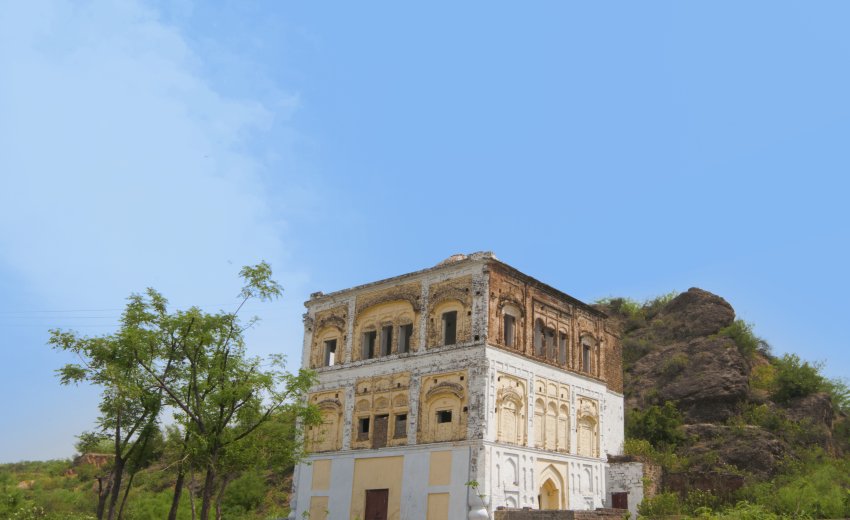The Historic Significance
It is believed that during Guru Nanak Dev Ji’s fourth voyage, also known as udasi, he and Bhai Mardana were traveling in the area. Both of them had been traveling throughout the summer. After spending around 40 days at the nearby Tilla Jogian temples, they stopped at the site to rest. Bhai Mardana expressed his thirst and lamented about the scarcity of water in the area at that time of the year. Guru Ji listened calmly, and according to legend, he used his cane to strike the ground to displace a stone. Instantly, a natural spring of water started flowing and quenched Bhai Mardana’s thirst.
According to Sikh folklore, Sher Shah Suri made an attempt to relocate the spring further up the hill so that he could use it as a supply of water for the newly built Rohtas Fort. The king's engineers tried their hand at accomplishing the feat three times, but they were unsuccessful each time.
Foundation of Gurdwara Chowa Sahib
The first memorial was built by Sardar Charat Singh, grandfather of Maharaja Ranjit Singh, which included a sarovar pool and a space for the recitation of the Guru Granth Sahib Ji. Then, in 1834, Maharaja Ranjit Singh commissioned the construction of the Gurdwara, which stands still even today. In the Punjabi language, a water spring is called ‘chowa’. So, the gurdwara was named ‘Chowa Sahib’ or the ‘Gurudwara of the exalted spring’.
Built with utmost faith, the beautiful building is surrounded by a gushing river, a fort, and lush green trees. It has River Ghan on one side, and the Rohtas Fort on the other. The entrance to the gurdwara is from inside the fort. For years, it has been a place that commemorates Guru Nanak Dev Ji’s journey across the lengths and breadths of the world.
During the India-Pakistan partition in 1947, the gurdwara was closed after Sikhs from the area migrated from Pakistan. For over seventy-two years, the shrine was in a state of neglect. On the occasion of Guru Nanak Dev Ji’s 550th Birthday in November 2019, the Evacuee Trust Property Board (ETPB) took the initiative to reopen the gurdwara following its restoration.
Ongoing Renovation
A vibrant celebration was held to celebrate the reopening of the Gurdwara Chowa Sahib, situated close to Rohtas Fort, a UNESCO world heritage site. Chairman of the Evacuee Trust Property Board, together with other members of the Pakistan Sikh Gurdwara Parbandhak Committee and prominent members of the Sikh community, presided over the opening event. The event started with members of the Sikh community leading an ardaas, which is a type of prayer, and kirtans, which are songs of devotion.
In the year 2020, Ranjit Nagara, a Sikh community organization with its headquarters in the United States, assumed responsibility for the rehabilitation and renovation of the Gurdwara. The work is being done by a team of people from various cultural backgrounds to restore the gurdwara to its traditional appearance and functionality while also constructing new buildings.
At present, the gurudwara has a three-story building, a langar hall by the name of Guru Ramdas Hall, which is open to devotees from across the world.
Over the last few years, Gurdwara Chowa Sahib has been undergoing extensive renovation in order to make it accessible to pilgrims coming to visit the Sikh shrines in Pakistan. The condition of gurudwaras, across the world, is changing gradually with more people becoming aware of their significance. The opening of the Kartarpur corridor has played a huge role in making more devotees get acquainted with the long-lost memorials of Guru Nanak Dev ji.
There remain many other historical Gurdwaras associated with the Sikh Gurus which have either been lost or are currently in a sad state of encroachment or neglect. The restoration of Gurdwara Chowa Sahib is a big step in the direction of conserving the glorious and revered sites of Sikh heritage in Pakistan .More of Pakistan’s ‘unrenovated’ gurudwaras significant to the Sikh faith will potentially be restored in the years to come.
